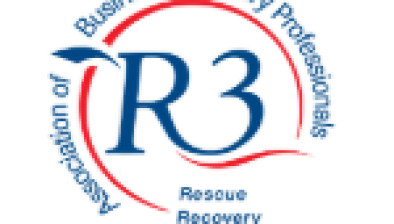Corporate and personal insolvencies increased in Scotland in 2019

Tim Cooper, chair of R3 in Scotland
The number of corporate and personal insolvencies for the whole of 2019 has increased, according to the latest Scottish Insolvency Statistics from Accountant in Bankruptcy.
Overall, corporate insolvency numbers in Scotland for the whole of 2019 were 4% higher than in 2018, and were at their highest level since 2012.
At the same time, personal insolvency numbers in Scotland for the whole of 2019 were 13% higher than in 2018, and were at their highest level since 2013.
However, the number of corporate insolvencies in Scotland fell by 4% in October-December 2019 compared with July-September 2019, and rose by 8% compared with October-December 2018.
Similarly, the number of personal insolvencies (bankruptcies and protected trust deeds) in Scotland fell by 5% in October-December 2019 compared with July-September 2019, and rose by 3% compared with October-December 2018.
Tim Cooper, chair of R3 in Scotland, said: “If one word could be said to sum up 2019, there’s an argument to be made for it to be ‘uncertainty’. Brexit uncertainty led to many companies understandably taking a ‘wait and see’ approach on everything from new equipment to decisions about opening offices. This in turn added sand to the wheels of dealmaking and business investment, with knock-on effects for the economy as a whole.
“Companies also had to cope with stop-start stockpiling over the course of 2019, as they prepared for the putative Brexit dates in March and then October. Increased levels of business activity before these dates were offset by slacker demand after them, as companies used up their stockpiles rather than ordering new inputs or products.
“Unemployment is still below historic levels, although the size of the workforce shrank in the most recent figures, suggesting that many enterprises are wary of taking on new staff. Inflation was relatively low across 2019, while overall economic growth in Scotland was also muted, with the construction sector fairly anaemic, alongside well-publicised difficulties in the retail sector as consumers curbed their spending, also affecting leisure and hospitality businesses.
“Minimum and living wages increased in 2019, along with the employer contribution to auto-enrolment pensions, while business rates continued to be a source of pain for many companies.”
Discussing personal insolvencies, Mr Cooper added: “This is the fourth consecutive annual rise in personal insolvency numbers, while 2019 is the first year since 2013 to have seen over 3,000 bankruptcies and protected trust deeds in all four quarters.
“While the number of people out of work stayed low across 2019, being counted as ‘employed’ in the official figures isn’t by itself a guarantee of either a stable income or a route out of poverty. The recent growth in the number of people counted as unavailable for work may point to a wider malaise. Those in receipt of a fixed income, be it benefits or a pension, are at risk of seeing their income eroded by inflation, and are susceptible to sudden financial ‘shocks’, such as an unexpected bill, which can undo budgeting efforts.
“The troubles in the retail and leisure sectors indicate that many people just don’t have much left over at the end of the week or the month, and have come to the point where there is nothing else they can cut from their outgoings to try and make ends meet.”
He continued: “Rises in the minimum and living wages will have helped many people, raising the base level of income for those in work. Wage growth marginally outstripped inflation for full-time employees last year, giving a sliver of relief, although the deficit of the ‘lost decade’ of wage growth following the global financial crisis is still having an effect.”










